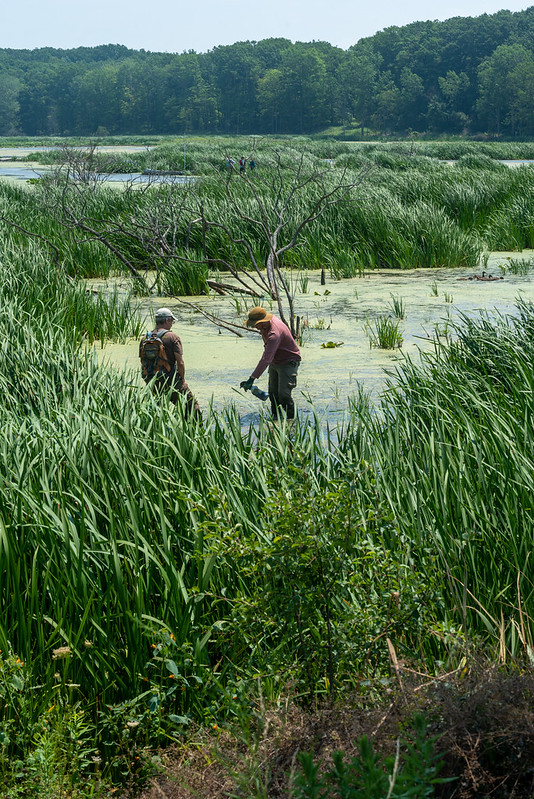
Introduced as an ornamental plant, and perhaps also accidentally introduced through ballast, flowering rush, Butomus umbellatus, has spread into lakes, ponds, marshes, and irrigation ditches across southern Canada and the northern United States. Several characteristics make it a great invader. It comes in two forms, a flowering diploid and a seldom-flowering triploid. Although diploid populations produce numerous seeds, both types tend to spread mainly through vegetative reproduction. They both produce rhizome buds that easily break off and float to new sites. Diploids also produce vegetative bulbils in the inflorescences. They can grow submerged, although their biomass declines in deeper water. The plant is hardy to zone 3, and in its native Europe grows from Spain to Finland.

When it isn’t flowering, the leaves tend to blend in among other aquatic vegetation like cattails, sweet flag, burr-reed, and iris. The sword-like leaves are weakly triangular in cross section.
Dr. John D. Madsen, researcher with USDA ARS, has been studying control methods for flowering rush and has several papers published on chemical, mechanical, and drawdown techniques, https://www.researchgate.net/project/Biology-and-management-of-flowering-rush-Butomus-umbellatus.
Still sold in the nursery trade, the plant is listed as a noxious weed in several states.

